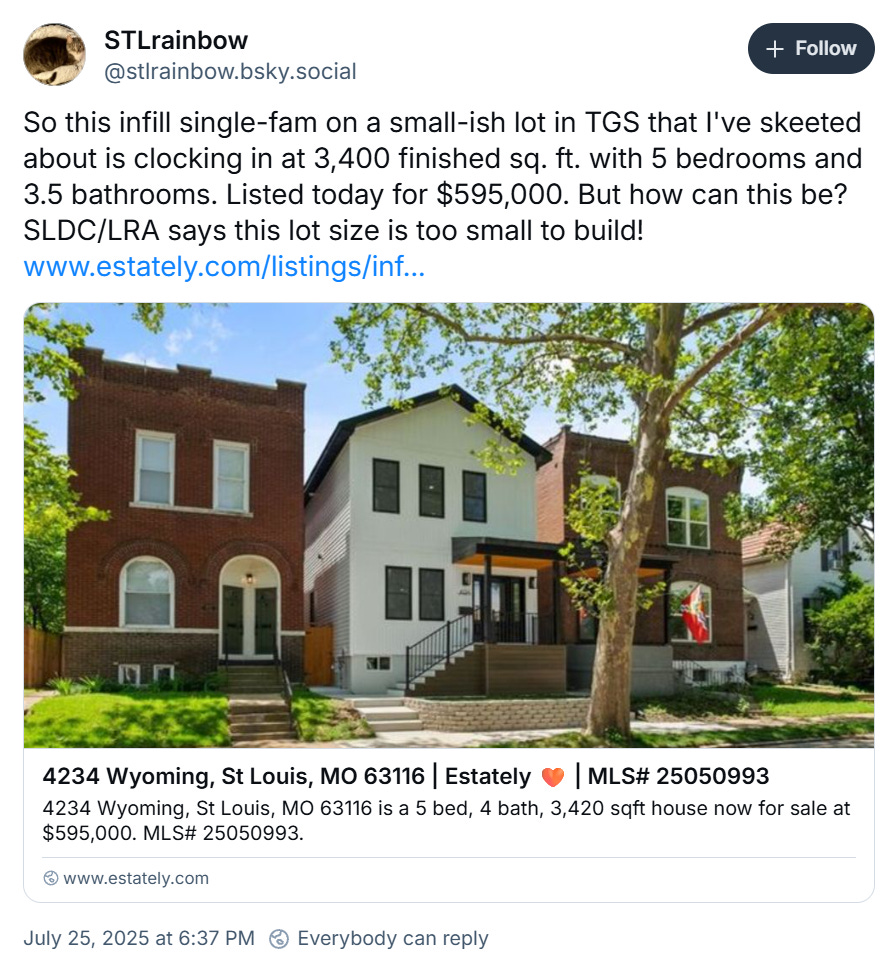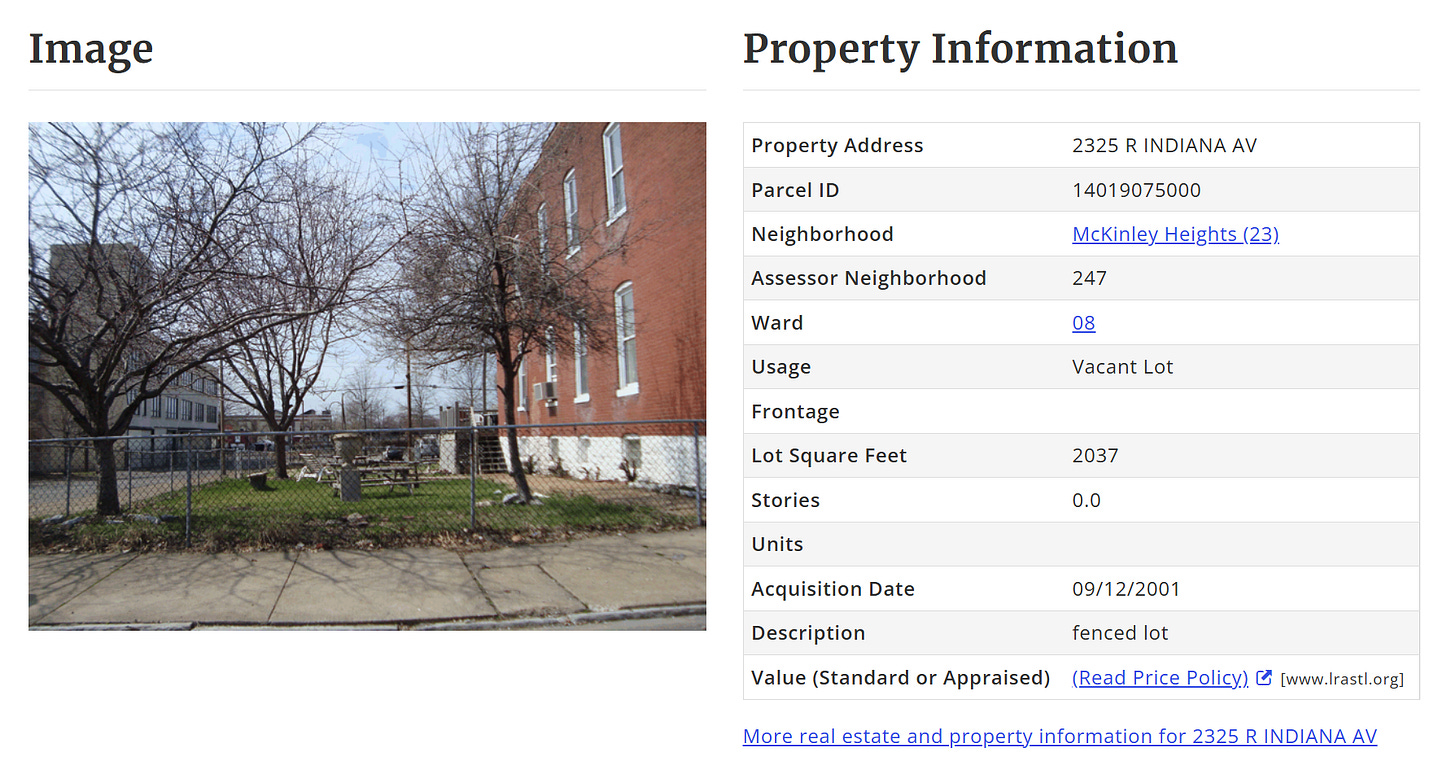Earlier this year, the St. Louis Development Corporation and St. Louis Land Bank (LRA) quietly tweaked some very important guidelines.
Although the land bank’s mission is to sell its parcels for renovation or development, they no longer would accept any plans for housing - and in particular, single family homes - on lots smaller than 4,000 square feet.
This is a rather obvious misstep for these agencies in St. Louis. St. Louis has seen its population decline for decades.1 This trend has not yet reversed either. Worse yet, housing production is not keeping up with the vacancy crisis.
Remarkably, their changes make the following illegal:

STLRainbow’s post pictured above is a great example of how weird the consequences are. A 3,400 square foot home is large by any standard, and it’s evidently possible to build a home that large even on a narrow lot. The home is big, yes, but it also feels distinctly urban because of the close proximity to its neighbors along with its relatively insignificant setback from the street.
Even so, a couple of St. Louis departments decided it would be best to restrict purchases from their land bank by lot size. This undoubtedly prevents many of the land bank’s parcels from having any chance of reinvestment while also restricting residents and investors from designing homes that fit their own needs.

The lot pictured above, for example, sits in a stable neighborhood and would be a perfect candidate for a small home. A 1000-1500 square foot unit would be productive for the city in so many ways, while also providing a cheaper living option for those who do not want (or cannot afford) so much space.
With such a small lot, we can achieve some pretty good urbanism even when we’re building large single family homes.
This is something that St. Louis’ own policymakers seem to understand. In fact, many Aldermen are currently working to do the exact opposite of the city’s land bank. Local outlet KSDK covered how the Board of Aldermen is looking to halve the minimum lot sizes for both single and two family structures to 2,000 and 2,500 square feet respectively. Given the current makeup of the city’s leadership, this is quite likely to pass and be signed into law by the Mayor.
St. Louis would join a host of other innovative cities seeking to reform their lot size requirements including Houston and Minneapolis.
So, why should cities lower - or remove - minimum lot sizes?
Not everyone wants a huge home, myself included
Increase housing supply and density
Increase affordability
Support walkable urbanism
Shore up property rights
Environmental benefits of smaller homes
More productive tax base
And so many more good reasons!
These are changes that cities have to make. Especially ones like St. Louis that face such pressing challenges due to population decline and suburban sprawl. So many cities have lost population to their suburbs and have faced - or will soon - major financial stress as their school districts and other services buckle at the weight of decline.
Smaller lot sizes are an obvious tool to combat these issues. We can fit more people in our cities. We can build more taxable homes. We can make the average home cheaper. We can bring back residents who did not find what they were looking for in the urban core. We can even make the city more fun, more walkable, more diverse, and probably more interesting along the way. When I suggested the other day that we should embrace uncertainty in planning, this is a prime example.
We did this right in our cities a century ago. We can do it again.
St. Louis Metromorphosis: Past Trends and Future Directions. (2004). United States: University of Missouri Press.




